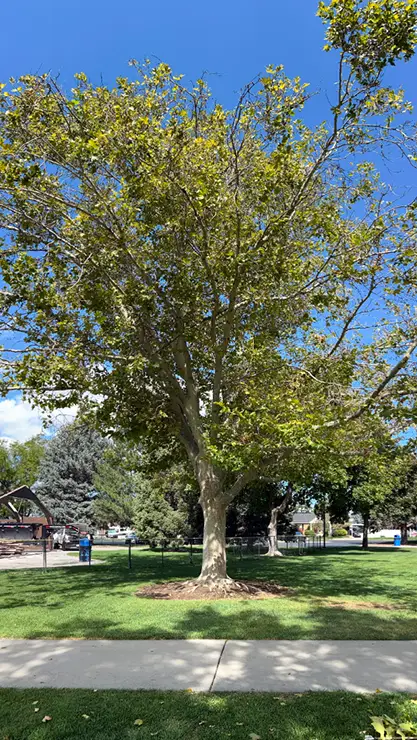

London Plane
Platanus x hispanica Mill. ex Münchh
London Plane
Platanus x hispanica Mill. ex Münchh
“…has been shown to be an efficient air purifier in cities.”– Economic and Ethnobotanical Uses
 Platanus x hispanica (Harding, 2024a)
Platanus x hispanica (Harding, 2024a)


Summary
Taxonomy
(How things are grouped and categorized based on shared traits.)- Kingdom: Plantae
- -Phylum: Streptophyta
- –Class: Equisetopsida
- —Subclass: Magnoliidae
- —-Order: Proteales
- —–Family: Platanaceae
- ——Genus: Platanus
- ——-Species: x hispanica
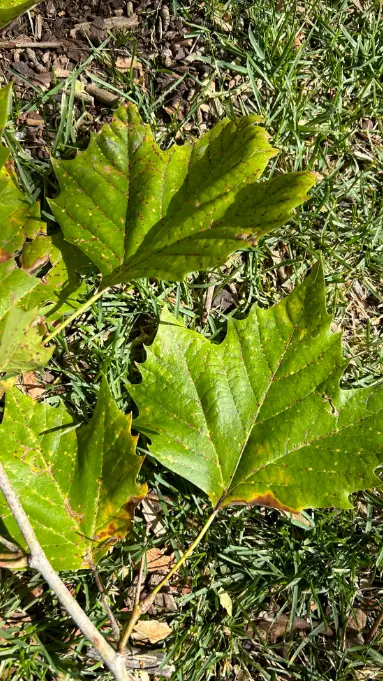
Taxonomic History:
Platanus x hispanica may also be referred to as Platanus x acerifolia or Platanus x hybrida (Hull, 2009). The name P. x hispanica can be traced back to Phillip Miller and Otto von Münchhausen in the 18th century (Münchhausen, 1765). It was called P. x acerifolia by Carl Lundwig von Willdenow (Linnaeus, 1797) after being known as P. orientalis var. acerifolia, as a variety of one of the parent species (Aiton, 1789).
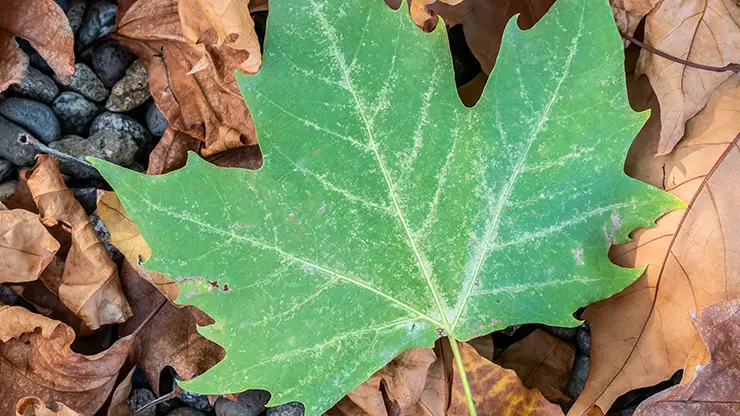
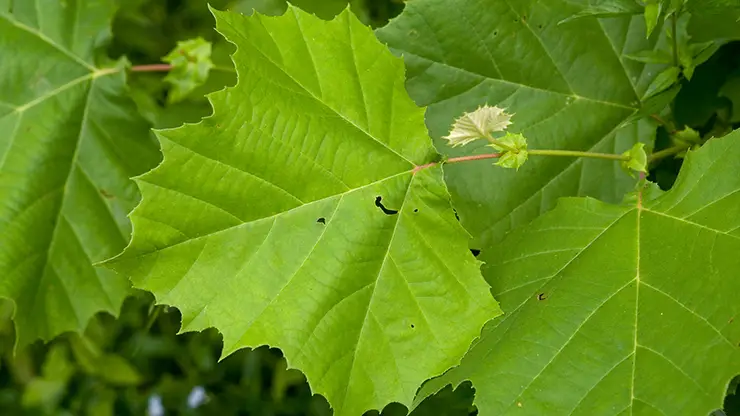

Identification Tips
It is very difficult to distinguish between Platanus x hispanica and its parent plant Platanus occidentalis, and some botanists do not agree that they are distinct entities (Welsh, 2003). The lobes of Platanus x hispanica’s leaves are longer than P. occidentalis’, and it has two fruits per stalk. Its bark has more green to it (Kaul, 2020). Platanus occidentalis also has shallower lobes (Kershner, 2008).

Fun Fact!
London planetree’s assumed parent species, Platanus occidentalis and Platanus orientalis, come from different sides of the world. Platanus occidentalis, the American sycamore, was brought over to Europe by New World explorers, while P. orientalis, the Oriental plane, is native to southeastern Europe. The two species probably crossbred in the Vauxhall garden, which is where the hybrid was discovered by John Tradescant the Younger in the 1600’s (Venables, 2015).
Native Range:
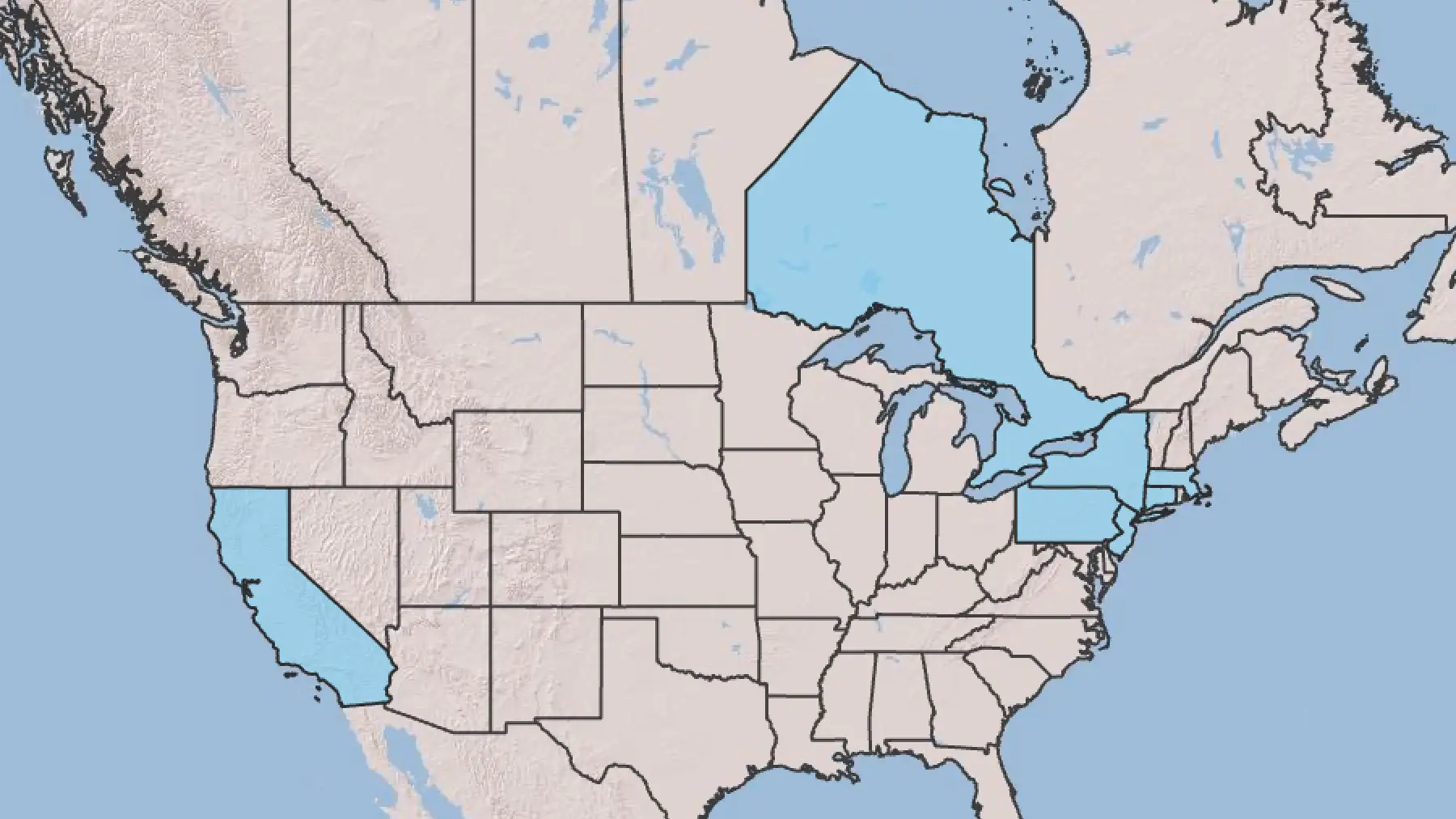

Native

Introduced
Plant Ecology/Habitat
London Plane is known for being a vigorous grower (Henry & Flood, 1919). It can tolerate environmental stressors such as pollution with minimal damage (Dineva, 2004), and sheds its bark to free itself of accumulated pollutants and disease carriers (MSPC, 2021). This tree does better with warm summers. Cooler conditions in the summer can make it more susceptible to the widespread tree disease anthracnose, which is caused by a microscopic fungus called Apiognomonia veneta (Ivanová, 2007).

Economic or Ethnobotanical Uses
- London planetree is commonly planted in urban areas throughout Europe, the Americas, and even Africa and Australia. It is very tolerant of air pollution (Hull, 2009) and has been shown to be an efficient air purifier in cities (Selmi, 2016).
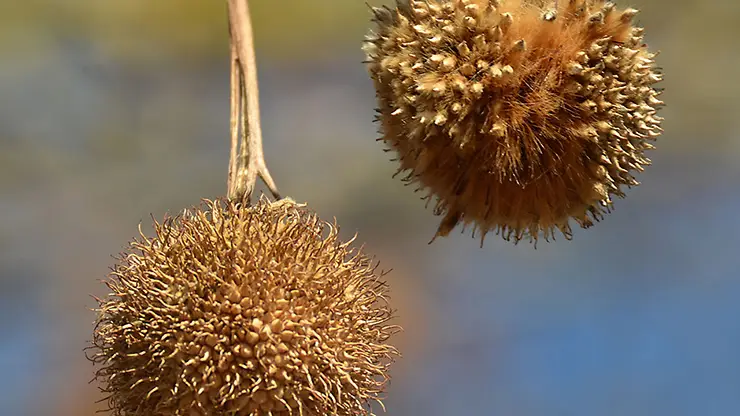

Conservation Status
This is a cultivated species and thus does not have a status rank (NatureServe, 2024).
Additional Resources

References

- Aiton, W., Bauer, F.A., Sowerby, J., Ehret, G.D., & Nicol, G. (1789). Hortus Kewensis, or, A catalogue of the plants cultivated in the Royal Botanic Garden at Kew (Vol. 3, p. 364). https://www.biodiversitylibrary.org/page/5875124
- Alexander, C. (2012). Platanus occidentalis. [Photograph]. Flickr. https://www.flickr.com/photos/aspidoscelis/49936881728/in/photostream/
- Dineva, S.B. (2004). Comparative studies of the leaf morphology and structure of white ash Fraxinus americana L. and London plane tree Platanus acerifolia Willd. growing in polluted area. Dendrobiology. 52:3-8. https://www.idpan.poznan.pl/images/stories/dendrobiology/vol52/52_3_8.pdf
- Golik, K. (2022). Fallen leaf of Platanus × hispanica in Varennes-sur-Morge, Puy-de-1. Proceedings of the Royal Irish Academy. Section B: Biological, Geological, and Chemical Science, 35, 9–28. http://www.jstor.org/stable/20517052
- Hladac (2019). Platanus x hispanica ripe fruit heads. [Photograph]. Wikimedia Commons. https://commons.wikimedia.org/wiki/File:%28ms%29_Platanus_%C3%97_hispanica_6.jpg
- Hull, R. (2009). A Short Guide to the London Plane. Islington, London. https://www.treetree.co.uk/treetree_downloads/The_London_Plane.pdf
- Ivanová, H., Bernadovičová, S., & Pastirčáková, K. (2007). Influence of changed ecological conditions on occurrence of London plane (Platanus × hispanica Münchh.) anthracnose. Folia Oecol, 34(1), 1.
- Kaul, R.B. (2020). Platanus occidentalis. Flora of North America, vol. 3. http://floranorthamerica.org/Platanus_occidentalis
- Kershner, B., Mathews, D., et al. (2008). Field Guide to Trees of North America. Andrew Stewart Publishing, Inc.
- Linnaeus, C., Willdenow, K.L., Link, H.F., Schwaegrichen, F., & Nauck, G.C. (1797). Species plantarum. Vol. 4, Issue 1, p. 474. https://www.biodiversitylibrary.org/page/671144
- MSPC (2021). Our London Plane Trees Are Losing Their Bark—Here’s Why. [website]. Madison Square Park Conservatory. https://madisonsquarepark.org/community/news/2021/07/our-london-plane-trees-are-losing-their-bark-heres-why/
- Münchhausen, O. (1765). Der Hausvater. Vol. 5, p. 229. Försters und Sohns Erben. https://www.biodiversitylibrary.org/page/47446276
- NatureServe. (2024). NatureServe Network Biodiversity Conservation Status Data accessed through NatureServe Explorer [web application]. NatureServe, Arlington, Virginia. https://explorer.natureserve.org/ Accessed: 8 October 2024.
- POWO (2024). Plants of the World Online. Facilitated by the Royal Botanical Gardens, Kew. Published on the Internet. Retrieved October 14, 2024 from https://powo.science.kew.org/taxon/urn:lsid:ipni.org:names:685854-1
- Selmi, W., Weber, C., Rivière, E., Blond, N., Mehdi, L., & Nowak, D. (2016). Air pollution removal by trees in public green spaces in Strasbourg city, France. Urban Forestry & Urban Greening, 17, 192–201. https://doi.org/10.1016/j.ufug.2016.04.010
- USDA (2024). Platanus x hispanica. [website]. USDA Plants Database. https://plants.usda.gov/plant-profile/PLHI
- Venables, B. (2015). The Secret History Of The London Plane Tree. [website]. Londonist. https://web.archive.org/web/20160202074555/http://londonist.com/2015/03/the-secret-history-of-the-london-plane-tree
- Welsh, S.L., Atwood, N.D., Goodrich, S., and Higgins, L.C. (2003). A Utah Flora. Jones Endowment Fund Monte L. Bean Life Science Museum, Brigham Young University Press.
